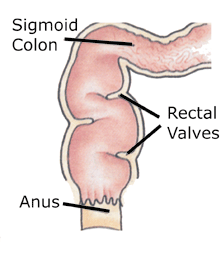

A flexible sigmoidoscopy examines the inside of your lower bowel with a flexible sigmoidoscope (a flexible tube with a small camera at the end). The instrument is passed carefully through your back passage (anus). Some air is inflated into the bowel enabling the person performing the procedure (the endoscopist) to look directly at its lining. The examination is carried out when you are fully awake. It will help discover the cause of your symptoms. Banding of haemorrhoids may be offered if appropriate.
One alternative is a barium enema x-ray examination. It is not as informative and has the added disadvantage that tissue samples cannot be taken. If you want further information, please do not hesitate to contact me for further information.
A flexible sigmoidoscopy carries a small risk of complications but the main risks are:
What happens if I decide not to have a flexible sigmoidoscopy?